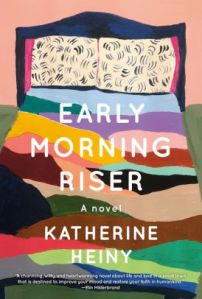 When it comes to crime, seniors are having a moment. Hulu’s hit Only Murders in the Building, with Steve Martin and Martin Short as investigating podcasters, will return for a third season, and Stephen Spielberg snapped up the film rights to Richard Osman’s bestselling The Thursday Murder Club. That 2020 mystery about four senior sleuths at an English retirement community has led to two excellent follow-ups: last year’s The Man Who Died Twice and this month’s The Bullet That Missed (Viking, digital galley). The Thursday Murder Club members — Elizabeth, Joyce, Ibrahim, Ron — are puzzling over the cold case of TV reporter Bethany Waites, who was close to exposing a sales tax fraud when her car went over a cliff into the sea; her body was never found. They get some help from Bethany’s former colleagues and their police pals Chris and Donna, but matters are complicated by former spy Elizabeth, who is being blackmailed into carrying out a hit on a retired KGB agent. Oh dear! It makes perfect sense if you’ve read the first two books. Clever plotting, witty writing and engaging characters make for a good old time.
When it comes to crime, seniors are having a moment. Hulu’s hit Only Murders in the Building, with Steve Martin and Martin Short as investigating podcasters, will return for a third season, and Stephen Spielberg snapped up the film rights to Richard Osman’s bestselling The Thursday Murder Club. That 2020 mystery about four senior sleuths at an English retirement community has led to two excellent follow-ups: last year’s The Man Who Died Twice and this month’s The Bullet That Missed (Viking, digital galley). The Thursday Murder Club members — Elizabeth, Joyce, Ibrahim, Ron — are puzzling over the cold case of TV reporter Bethany Waites, who was close to exposing a sales tax fraud when her car went over a cliff into the sea; her body was never found. They get some help from Bethany’s former colleagues and their police pals Chris and Donna, but matters are complicated by former spy Elizabeth, who is being blackmailed into carrying out a hit on a retired KGB agent. Oh dear! It makes perfect sense if you’ve read the first two books. Clever plotting, witty writing and engaging characters make for a good old time.
 The same can be said for Deanna Raybourn’s frisky Killers of a Certain Age (Berkley, digital galley), which also features a quartet of savvy seniors. Billie, Mary Alice, Natalie and Helen were teenagers back in 1978 when they were recruited by the secret global network known as the Museum and trained as elite assassins. All their targets were nasty criminals and killers, of course. Now the women have reached retirement age, and the Museum has sent them on a celebratory cruise. All is going swimmingly until the women spy a Museum colleague in disguise and realize they’re his targets. Someone at the Museum thinks they know too much — and they do, like how to hit back. Raybourn alternates the women’s present-day movements with flashbacks to their training and past missions. All four make the most of being women of a certain age — often overlooked, practically invisible.
The same can be said for Deanna Raybourn’s frisky Killers of a Certain Age (Berkley, digital galley), which also features a quartet of savvy seniors. Billie, Mary Alice, Natalie and Helen were teenagers back in 1978 when they were recruited by the secret global network known as the Museum and trained as elite assassins. All their targets were nasty criminals and killers, of course. Now the women have reached retirement age, and the Museum has sent them on a celebratory cruise. All is going swimmingly until the women spy a Museum colleague in disguise and realize they’re his targets. Someone at the Museum thinks they know too much — and they do, like how to hit back. Raybourn alternates the women’s present-day movements with flashbacks to their training and past missions. All four make the most of being women of a certain age — often overlooked, practically invisible.
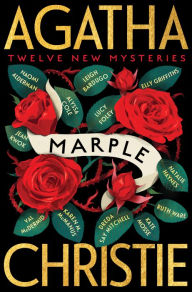 Remember Agatha Christie’s memorable Miss Marple, whose age and mild demeanor hid her knife-sharp wits? Marple: 12 New Stories (Morrow, digital galley) is a treat for fans of the legendary sleuth as a dozen contemporary writers — Ruth Ware, Elly Griffiths and Lucy Foley, among them — put their own spin on Jane Marple. In “Miss Marple Takes Manhattan,” Alyssa Cole sweeps her off to New York City, where her nephew underestimates his aunt’s street smarts. The body’s in the kitchen instead of the library in Val McDermid’s “The Second Murder in the Vicarage,” and in Leigh Bardugo’s “The Disappearance,” Jane’s old pal Dolly Bantry needs her help in solving another mystery at Gossington Hall. Christie would approve.
Remember Agatha Christie’s memorable Miss Marple, whose age and mild demeanor hid her knife-sharp wits? Marple: 12 New Stories (Morrow, digital galley) is a treat for fans of the legendary sleuth as a dozen contemporary writers — Ruth Ware, Elly Griffiths and Lucy Foley, among them — put their own spin on Jane Marple. In “Miss Marple Takes Manhattan,” Alyssa Cole sweeps her off to New York City, where her nephew underestimates his aunt’s street smarts. The body’s in the kitchen instead of the library in Val McDermid’s “The Second Murder in the Vicarage,” and in Leigh Bardugo’s “The Disappearance,” Jane’s old pal Dolly Bantry needs her help in solving another mystery at Gossington Hall. Christie would approve.
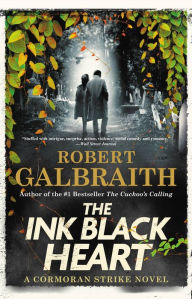 Who is Anomie? The quest to discover the identity of a creepy internet stalker and possible killer occupies detectives Cormoran Strike and Robin Ellacott for a thousand pages in The Ink Black Heart (Little Brown, library hardcover), the sixth entry in the best-selling series by Robert Galbraith, a pseudonym for J.K. Rowling. The Harry Potter author is no stranger to internet controversy, and her familiarity with fans and trolls shows up not only in the complex storyline but also in the pages of Twitter threads and chat room transcripts. I did a fair amount of skimming these often confusing portions, eager to return to the investigation of the murder of Edie Ledwell, the co-creator of a quirky online cartoon, “The Ink Black Heart.” The prime suspect is Anomie, who developed a free online game based on Ledwell’s cartoon and who was unmercifully harassing her, along with thousands of followers. But who is Anomie in real life? Numerous eccentrics present themselves, from jealous animators and actors, to former agents and business partners. Robin infiltrates the online game as Buffypaws, and Strike even disguises himself as Darth Vader at a comics con. But all is not fun and games. A parcel bomb explodes, someone is shoved under a train, a hostage situation unfolds. It’s to Rowling’s storytelling credit that The Ink Black Heart has enough suspense to keep readers interested in Anomie to the very end. Or maybe they want to know how the detectives’ love life plays out. Those two should get a room.
Who is Anomie? The quest to discover the identity of a creepy internet stalker and possible killer occupies detectives Cormoran Strike and Robin Ellacott for a thousand pages in The Ink Black Heart (Little Brown, library hardcover), the sixth entry in the best-selling series by Robert Galbraith, a pseudonym for J.K. Rowling. The Harry Potter author is no stranger to internet controversy, and her familiarity with fans and trolls shows up not only in the complex storyline but also in the pages of Twitter threads and chat room transcripts. I did a fair amount of skimming these often confusing portions, eager to return to the investigation of the murder of Edie Ledwell, the co-creator of a quirky online cartoon, “The Ink Black Heart.” The prime suspect is Anomie, who developed a free online game based on Ledwell’s cartoon and who was unmercifully harassing her, along with thousands of followers. But who is Anomie in real life? Numerous eccentrics present themselves, from jealous animators and actors, to former agents and business partners. Robin infiltrates the online game as Buffypaws, and Strike even disguises himself as Darth Vader at a comics con. But all is not fun and games. A parcel bomb explodes, someone is shoved under a train, a hostage situation unfolds. It’s to Rowling’s storytelling credit that The Ink Black Heart has enough suspense to keep readers interested in Anomie to the very end. Or maybe they want to know how the detectives’ love life plays out. Those two should get a room.
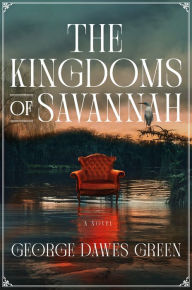 Savannah is a lovely city with an ugly past still shadowing the present. No one knows that better than society doyenne and widowed matriarch Morgana Musgrave: “I do believe there’s a poisonous vapor in this town, a sort of miasmal gas that rises from the storm drains and leeches into our blood. Would either of you care for cheese straws?” George Dawes Green mixes mystery and social commentary in his lush novel The Kingdoms of Savannah (Celadon Books, digital galley), where it’s midnight in that garden of sweetness and rot, secrets and lies. The murder of an affable young homeless man named Billy and the disappearance of crazy-talking archaeologist Matilda “Stony” Stone sparks Morgana’s adopted black granddaughter and aspiring documentary filmmaker Jaq to ask difficult questions in her search for justice. Her uncle Ransom, Morgana’s wayward younger son who lives in the homeless camp under the Truman bridge, reluctantly helps her. Meanwhile, Morgana’s failing detective agency is hired by the chief suspect, a sleazy developer/slumlord, to prove his innocence. A supporting ensemble cast of eccentrics — society matrons, ambitious cops, ghost tour operators, vicious meth heads, a mysterious nighttime whistler — wind through the immersive story, moving from mansions to dive bars to a swampy island upriver. A woman is imprisoned in an underground tunnel reached by storm drain. I couldn’t stop reading, and I didn’t want it to end. Love the cover, too.
Savannah is a lovely city with an ugly past still shadowing the present. No one knows that better than society doyenne and widowed matriarch Morgana Musgrave: “I do believe there’s a poisonous vapor in this town, a sort of miasmal gas that rises from the storm drains and leeches into our blood. Would either of you care for cheese straws?” George Dawes Green mixes mystery and social commentary in his lush novel The Kingdoms of Savannah (Celadon Books, digital galley), where it’s midnight in that garden of sweetness and rot, secrets and lies. The murder of an affable young homeless man named Billy and the disappearance of crazy-talking archaeologist Matilda “Stony” Stone sparks Morgana’s adopted black granddaughter and aspiring documentary filmmaker Jaq to ask difficult questions in her search for justice. Her uncle Ransom, Morgana’s wayward younger son who lives in the homeless camp under the Truman bridge, reluctantly helps her. Meanwhile, Morgana’s failing detective agency is hired by the chief suspect, a sleazy developer/slumlord, to prove his innocence. A supporting ensemble cast of eccentrics — society matrons, ambitious cops, ghost tour operators, vicious meth heads, a mysterious nighttime whistler — wind through the immersive story, moving from mansions to dive bars to a swampy island upriver. A woman is imprisoned in an underground tunnel reached by storm drain. I couldn’t stop reading, and I didn’t want it to end. Love the cover, too.
 Where Green’s novel is dark and glittery, Sarah Addison Allen’s Other Birds (St. Martin’s Press, digital galley) is a dreamy pastel fable haunted by family secrets and a few lingering ghosts. Recent high school grad Zoey decides to spend the summer before college at her late mother’s apartment on quaint Mallow Island near Charleston, S.C. The small Dellawisp complex — named after the tiny turquoise birds fluttering in the courtyard — is also home to a reticent caretaker, a solitary young chef, a henna artist with an assumed name, a hoarder obsessed with a legendary writer, and her reclusive sister. Their stories, along with the wistful spirits of past residents, connect past and present in magical and surprising ways. Allen’s touch is light, her prose lyrical, so it’s easy to suspend disbelief and become absorbed in the intriguing story. “Stories aren’t fiction. Stories are fabric. They’re the white sheets we drape over our ghosts so we can see them.”
Where Green’s novel is dark and glittery, Sarah Addison Allen’s Other Birds (St. Martin’s Press, digital galley) is a dreamy pastel fable haunted by family secrets and a few lingering ghosts. Recent high school grad Zoey decides to spend the summer before college at her late mother’s apartment on quaint Mallow Island near Charleston, S.C. The small Dellawisp complex — named after the tiny turquoise birds fluttering in the courtyard — is also home to a reticent caretaker, a solitary young chef, a henna artist with an assumed name, a hoarder obsessed with a legendary writer, and her reclusive sister. Their stories, along with the wistful spirits of past residents, connect past and present in magical and surprising ways. Allen’s touch is light, her prose lyrical, so it’s easy to suspend disbelief and become absorbed in the intriguing story. “Stories aren’t fiction. Stories are fabric. They’re the white sheets we drape over our ghosts so we can see them.”
 Lisa Jewell’s 2019 chiller The Family Upstairs reminded me of one Barbara Vine’s twisted tales of a dysfunctional family. It wrapped up quite neatly so I was surprised to learn that there was a sequel, The Family Remains (Atria, digital galley). Jewell introduces several new characters, including an abused wife and a discerning detective, but mostly focuses on the continuing fortunes of siblings Lucy and Henry Lamb. Their parents died in a presumed murder-suicide when they were young teens, and the first book explores their peculiar upbringing. More revelations unfold in the second as grown-up Lucy and Henry reunite in London and begin the search for Finn, the boy who lived with them back in the day. Meanwhile, the police are trying to identify a bag of bones found by mudlarkers on the Thames, and authorities in France have discovered the murder of a man connected to Lucy. The Family Remains could be read as a stand-alone, but it’s better if you first read The Family Upstairs. Shiver.
Lisa Jewell’s 2019 chiller The Family Upstairs reminded me of one Barbara Vine’s twisted tales of a dysfunctional family. It wrapped up quite neatly so I was surprised to learn that there was a sequel, The Family Remains (Atria, digital galley). Jewell introduces several new characters, including an abused wife and a discerning detective, but mostly focuses on the continuing fortunes of siblings Lucy and Henry Lamb. Their parents died in a presumed murder-suicide when they were young teens, and the first book explores their peculiar upbringing. More revelations unfold in the second as grown-up Lucy and Henry reunite in London and begin the search for Finn, the boy who lived with them back in the day. Meanwhile, the police are trying to identify a bag of bones found by mudlarkers on the Thames, and authorities in France have discovered the murder of a man connected to Lucy. The Family Remains could be read as a stand-alone, but it’s better if you first read The Family Upstairs. Shiver.
 Don’t wait another day to read Tomorrow and Tomorrow and Tomorrow (Knopf, review copy), Gabrielle Zevin’s immersive new novel about friendship, creativity — and video games. But don’t let the latter put you off. You don’t have to have died of dysentery on the Oregon Trail, or survived a zombie apocalypse, to appreciate this multi-leveled chronicle of two California kids, Sam and Sadie, who bond while playing Super Mario in a children’s hospital. A misunderstanding interrupts their early friendship, but they reconnect as college students in the ‘90s — Sam at Harvard, Sadie at MIT — and the question “Do you still game?” leads to a partnership designing video games. The collaboration, although wildly successful, is also fraught by misunderstandings, jealousy and perceived betrayals. Egos collide, other people — Sadie’s manipulative professor Dov, Sam’s supportive roommate Marx — play significant roles. I’m a reader, not a gamer, but good books and games both depend on content and storytelling. Zevin, who also wrote book-club favorite The Storied Life of A.J. Fikry, knows how to tell a story. Tomorrow and Tomorrow and Tomorrow is both playful and serious, compulsively readable. Your turn…
Don’t wait another day to read Tomorrow and Tomorrow and Tomorrow (Knopf, review copy), Gabrielle Zevin’s immersive new novel about friendship, creativity — and video games. But don’t let the latter put you off. You don’t have to have died of dysentery on the Oregon Trail, or survived a zombie apocalypse, to appreciate this multi-leveled chronicle of two California kids, Sam and Sadie, who bond while playing Super Mario in a children’s hospital. A misunderstanding interrupts their early friendship, but they reconnect as college students in the ‘90s — Sam at Harvard, Sadie at MIT — and the question “Do you still game?” leads to a partnership designing video games. The collaboration, although wildly successful, is also fraught by misunderstandings, jealousy and perceived betrayals. Egos collide, other people — Sadie’s manipulative professor Dov, Sam’s supportive roommate Marx — play significant roles. I’m a reader, not a gamer, but good books and games both depend on content and storytelling. Zevin, who also wrote book-club favorite The Storied Life of A.J. Fikry, knows how to tell a story. Tomorrow and Tomorrow and Tomorrow is both playful and serious, compulsively readable. Your turn… Spying is often called the Great Game, and for a long time Berlin was a major playground. But in the winter of 1990, the wall has fallen and the rules are changing for the agents of Winter Work (Knopf, digital galley). Author Dan Fesperman is on familiar territory, though, as he crafts another intricate thriller, this one inspired by a true incident — the CIA’s fabled acquisition of important Stasi files with informers’ names. Stasi colonel Emil Grimm hopes to trade the information for safe passage to the West for himself, his terminally ill wife and her caretaker. The Russians want the data for leverage and money, and they will kill to get their hands on it. The CIA is buying from whoever offers the best deal, and agent Claire Sailor is savvy enough to know her boss is keeping her in the dark even as she plays cat and mouse with enigmatic Grimm and the Russian henchmen. Sailor, who last appeared in The Cover Wife, gets some help from an old colleague who misses the game, but she’s not sure she can trust a new partner. Snow and secrets are so thick on the ground you might not spy the Easter eggs from Fesperman’s previous novels. Look out for a certain Paris snow globe.
Spying is often called the Great Game, and for a long time Berlin was a major playground. But in the winter of 1990, the wall has fallen and the rules are changing for the agents of Winter Work (Knopf, digital galley). Author Dan Fesperman is on familiar territory, though, as he crafts another intricate thriller, this one inspired by a true incident — the CIA’s fabled acquisition of important Stasi files with informers’ names. Stasi colonel Emil Grimm hopes to trade the information for safe passage to the West for himself, his terminally ill wife and her caretaker. The Russians want the data for leverage and money, and they will kill to get their hands on it. The CIA is buying from whoever offers the best deal, and agent Claire Sailor is savvy enough to know her boss is keeping her in the dark even as she plays cat and mouse with enigmatic Grimm and the Russian henchmen. Sailor, who last appeared in The Cover Wife, gets some help from an old colleague who misses the game, but she’s not sure she can trust a new partner. Snow and secrets are so thick on the ground you might not spy the Easter eggs from Fesperman’s previous novels. Look out for a certain Paris snow globe.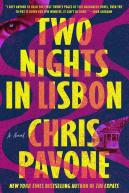 Beginning with the excellent The Expats 10 years ago, Chris Pavone has proved he can do the twist with aplomb. He adds a couple of moves in Two Nights in Lisbon (FSG, digital galley), but I know when I’m being played. I don’t mind because I’m having too much fun. Ariel Pryce wakes up in Lisbon hotel room to discover her handsome, younger husband, John Wright, has disappeared. The police and American Embassy officials aren’t much interested that the financier has gone missing for a few hours, although they are surprised how little Ariel knows about her husband of three months. Still, they reassure her he’ll turn up. He doesn’t, but a ransom note does. Game on. Pavone neatly shifts between present and past to reveal his characters’ back stories and secrets. Most recently a bookseller in a small town with a young son, Ariel was once an actress and fled a bad marriage. She’s had several names. Surprise — John has, too. Pavone weaves international intrigue with domestic suspense and brings back a villain from a previous book, all the while building to an improbable yet satisfying ending.
Beginning with the excellent The Expats 10 years ago, Chris Pavone has proved he can do the twist with aplomb. He adds a couple of moves in Two Nights in Lisbon (FSG, digital galley), but I know when I’m being played. I don’t mind because I’m having too much fun. Ariel Pryce wakes up in Lisbon hotel room to discover her handsome, younger husband, John Wright, has disappeared. The police and American Embassy officials aren’t much interested that the financier has gone missing for a few hours, although they are surprised how little Ariel knows about her husband of three months. Still, they reassure her he’ll turn up. He doesn’t, but a ransom note does. Game on. Pavone neatly shifts between present and past to reveal his characters’ back stories and secrets. Most recently a bookseller in a small town with a young son, Ariel was once an actress and fled a bad marriage. She’s had several names. Surprise — John has, too. Pavone weaves international intrigue with domestic suspense and brings back a villain from a previous book, all the while building to an improbable yet satisfying ending. “Fictional murder is oddly soothing in troubled times.” So thinks forensic archaeologist Ruth Galloway at one point in Elly Griffiths’ The Locked Room (HarperCollins, digital galley), set during the early days of the pandemic in England’s Norfolk region. Ruth is hoping her brother has sent her a crime novel to read during lockdown, maybe something by Val McDermid or Ian Rankin. Ruth has excellent taste! Crime fiction is my go-to genre, and I’ve been reading scads of good ones this summer, including The Locked Room. Since it’s the 14th (and apparently penultimate) book in the series, it’s not recommended for newcomers who are likely to find the relationships among the characters as confusing as its puzzle of a plot. Covid lockdown complicates everything, from Ruth and her students unearthing a possible plague skeleton, to Nelson and his fellow police officers investigating a series of murders disguised as suicides. And someone has been locked in a lonely cellar. In Lauren Belfer’s absorbing Ashton Hall (Ballantine, digital galley), there’s a secret room in an English manor house — and there’s a skeleton walled inside. The discovery by a curious, autistic boy sparks his mother, a frustrated academic, to research the house’s history going back to the Elizabethan era.
“Fictional murder is oddly soothing in troubled times.” So thinks forensic archaeologist Ruth Galloway at one point in Elly Griffiths’ The Locked Room (HarperCollins, digital galley), set during the early days of the pandemic in England’s Norfolk region. Ruth is hoping her brother has sent her a crime novel to read during lockdown, maybe something by Val McDermid or Ian Rankin. Ruth has excellent taste! Crime fiction is my go-to genre, and I’ve been reading scads of good ones this summer, including The Locked Room. Since it’s the 14th (and apparently penultimate) book in the series, it’s not recommended for newcomers who are likely to find the relationships among the characters as confusing as its puzzle of a plot. Covid lockdown complicates everything, from Ruth and her students unearthing a possible plague skeleton, to Nelson and his fellow police officers investigating a series of murders disguised as suicides. And someone has been locked in a lonely cellar. In Lauren Belfer’s absorbing Ashton Hall (Ballantine, digital galley), there’s a secret room in an English manor house — and there’s a skeleton walled inside. The discovery by a curious, autistic boy sparks his mother, a frustrated academic, to research the house’s history going back to the Elizabethan era.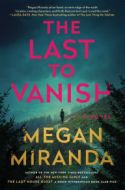 Fiona Barton, Megan Miranda and Ruth Ware are reliable authors for summer suspense. In Barton’s Local Gone Missing (Berkley Penguin, digital galley), a police detective on medical leave gets involved in a small seaside town’s local politics when two teens overdose at a music festival and a senior gadfly goes missing. People are always disappearing in Miranda’s twisty thrillers, and in The Last to Vanish (Scribner, digital galley), the mountain resort town of Cutter’s Pass has a long history of visitors going missing. Now, when a journalist investigating the disappearances also vanishes, his younger brother and the likeable manager of a local inn pick up the trail. Ruth Ware’s The It Girl (Gallery/Scout Press, digital gallery) toggles between the Oxford University of a decade ago and present-day Edinburgh. Back in the day, charismatic April was Hannah’s roommate and the center of a tight group of friends. Then she was murdered, and Hannah’s testimony put the killer behind bars. Ten years later, pregnant Hannah is married to April’s boyfriend Will when the killer dies in prison and a journalist suggests he was wrongly convicted. The Big Chill atmosphere and academic mystery seemed overly familiar to me, but I still kept turning pages.
Fiona Barton, Megan Miranda and Ruth Ware are reliable authors for summer suspense. In Barton’s Local Gone Missing (Berkley Penguin, digital galley), a police detective on medical leave gets involved in a small seaside town’s local politics when two teens overdose at a music festival and a senior gadfly goes missing. People are always disappearing in Miranda’s twisty thrillers, and in The Last to Vanish (Scribner, digital galley), the mountain resort town of Cutter’s Pass has a long history of visitors going missing. Now, when a journalist investigating the disappearances also vanishes, his younger brother and the likeable manager of a local inn pick up the trail. Ruth Ware’s The It Girl (Gallery/Scout Press, digital gallery) toggles between the Oxford University of a decade ago and present-day Edinburgh. Back in the day, charismatic April was Hannah’s roommate and the center of a tight group of friends. Then she was murdered, and Hannah’s testimony put the killer behind bars. Ten years later, pregnant Hannah is married to April’s boyfriend Will when the killer dies in prison and a journalist suggests he was wrongly convicted. The Big Chill atmosphere and academic mystery seemed overly familiar to me, but I still kept turning pages.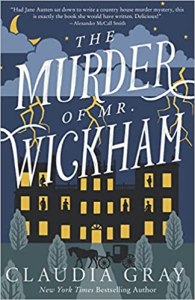
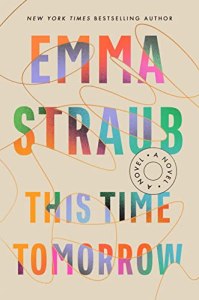






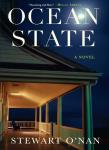



























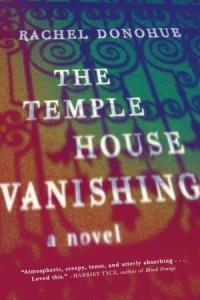


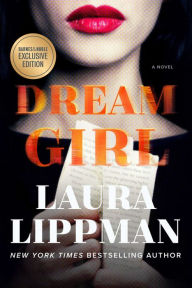 Injured in a fall, successful novelist Gerry Andersen is confined to a hospital bed in his new Baltimore penthouse, dependent on his colorless assistant and a stodgy night nurse. His drug-addled mind roams through his past and present like Marley’s ghost, but he is certain the woman calling on the phone at night saying she’s Aubrey is not Aubrey. Impossible. Aubrey is the main character in his best-selling novel “Dream Girl.” She’s fictional. Gerry made her up. She doesn’t exist. Or does she?
Injured in a fall, successful novelist Gerry Andersen is confined to a hospital bed in his new Baltimore penthouse, dependent on his colorless assistant and a stodgy night nurse. His drug-addled mind roams through his past and present like Marley’s ghost, but he is certain the woman calling on the phone at night saying she’s Aubrey is not Aubrey. Impossible. Aubrey is the main character in his best-selling novel “Dream Girl.” She’s fictional. Gerry made her up. She doesn’t exist. Or does she?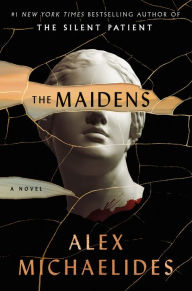 I detested Alex Michaelides’ second novel The Maidens (Celadon, purchased hardcover). Let me count the ways: poor writing, uneven pacing, unbelievable characters, absurd plot, ludicrous ending. I did like the setting — Cambridge University with its historic, shadowed halls of academe. But the story of a widowed psychotherapist convinced that a classics professor is killing his female students is a slog from slow beginning to ridiculous conclusion, a true disappointment for those who liked Michaelides’ The Silent Witness. Sorry I wasted the time and money, bamboozled by the hype and comparisons to Donna Tartt’s The Secret History. If you want to read something else on the best-seller list (keeping in mind that “best” refers only to sales), try Laura Dave’s The Last Thing He Told Me (Simon & Schuster, digital galley), in which a woman’s husband disappears in the midst of a corporate scandal, and she and her teenage stepdaughter go looking for him. It’s a quick, suspenseful riff on the old “you never know really know somebody” plot.
I detested Alex Michaelides’ second novel The Maidens (Celadon, purchased hardcover). Let me count the ways: poor writing, uneven pacing, unbelievable characters, absurd plot, ludicrous ending. I did like the setting — Cambridge University with its historic, shadowed halls of academe. But the story of a widowed psychotherapist convinced that a classics professor is killing his female students is a slog from slow beginning to ridiculous conclusion, a true disappointment for those who liked Michaelides’ The Silent Witness. Sorry I wasted the time and money, bamboozled by the hype and comparisons to Donna Tartt’s The Secret History. If you want to read something else on the best-seller list (keeping in mind that “best” refers only to sales), try Laura Dave’s The Last Thing He Told Me (Simon & Schuster, digital galley), in which a woman’s husband disappears in the midst of a corporate scandal, and she and her teenage stepdaughter go looking for him. It’s a quick, suspenseful riff on the old “you never know really know somebody” plot.  Thank goodness for Elly Griffiths and Laurie R. King. Neither writer misses a beat in the latest entries in their long-running detective series. In Griffith’s The Night Hawks (Houghton Mifflin, digital galley), forensic archaeologist Ruth Galloway and her new colleague David Brown are called to a crime scene when metal detectorists discover Bronze Age artifacts, a new corpse and a skeleton on a Norfolk beach. Soon after, these same “Night Hawks” are at the scene of a presumed murder/suicide at an isolated farmhouse, and then one of their own turns up dead. DCI Harry Nelson, the father of Ruth’s 10-year-old daughter, doesn’t like coincidences, and he’s also suspicious of Ruth’s new colleague, who is a first-class meddler. The bits of history and folklore (there’s a gigantic hound) are fascinating, as is the mystery itself and the continuing relationship between Ruth and Nelson. History, mystery and myth also play into King’s lively Castle Shade (Bantam/Random House, digital galley), with Mary Russell and husband Sherlock Holmes helping Marie of Roumania — yes, the real Queen — figure out who is threatening her teenage daughter. Marie is ensconced in her beloved Castle Bran in the Carpathian mountains of Transylvania, once home to Vlad the Impaler. There are whispers of witchcraft and rumors of vampires among the villagers and castle servants, although Holmes’ brother Mycroft suspects Marie’s diplomatic enemies of trying to undermine her popularity. Russell and Holmes think someone inside or close to the castle wants Marie out of the way. King makes the most of the shivery atmosphere as her wily and witty detectives stalk things that go bump in the night.
Thank goodness for Elly Griffiths and Laurie R. King. Neither writer misses a beat in the latest entries in their long-running detective series. In Griffith’s The Night Hawks (Houghton Mifflin, digital galley), forensic archaeologist Ruth Galloway and her new colleague David Brown are called to a crime scene when metal detectorists discover Bronze Age artifacts, a new corpse and a skeleton on a Norfolk beach. Soon after, these same “Night Hawks” are at the scene of a presumed murder/suicide at an isolated farmhouse, and then one of their own turns up dead. DCI Harry Nelson, the father of Ruth’s 10-year-old daughter, doesn’t like coincidences, and he’s also suspicious of Ruth’s new colleague, who is a first-class meddler. The bits of history and folklore (there’s a gigantic hound) are fascinating, as is the mystery itself and the continuing relationship between Ruth and Nelson. History, mystery and myth also play into King’s lively Castle Shade (Bantam/Random House, digital galley), with Mary Russell and husband Sherlock Holmes helping Marie of Roumania — yes, the real Queen — figure out who is threatening her teenage daughter. Marie is ensconced in her beloved Castle Bran in the Carpathian mountains of Transylvania, once home to Vlad the Impaler. There are whispers of witchcraft and rumors of vampires among the villagers and castle servants, although Holmes’ brother Mycroft suspects Marie’s diplomatic enemies of trying to undermine her popularity. Russell and Holmes think someone inside or close to the castle wants Marie out of the way. King makes the most of the shivery atmosphere as her wily and witty detectives stalk things that go bump in the night. Having wrapped up the infamous Ellingham cold case in the “Truly Devious” trilogy, teen detective Stevie Bell returns in Maureen Johnson’s nifty The Box in The Woods (HarperCollins, digital galley). The new owner of Camp Wonder Falls offers Stevie and her Ellingham friends Janelle and Nate jobs as counselors in return for Stevie’s help with a podcast investigating the 1978 Box in the Woods murders. Back then at what was Camp Sunny Pines, four counselors were killed and three of their bodies hidden in an old hunting blind. Johnson has a blast moving the story back and forth between past and present, and using every summer camp trope from from familiar books and horror movies. You practically expect Jason to jump out from behind a tree. It’s also fun seeing the friends trying to fit in at camp — engineer Janelle proves to be super at crafts, while Nate, who wrote a best-selling fantasy novel at 14, is plagued by a critical camper, and Stevie discovers previously unknown outdoor skills. It helps that boyfriend David is camping at a nearby lake and knows the way her mind works — and her anxiety grows — when confronted with a puzzle. The Box in the Woods may be even better than its predecessors, The Hand on the Wall, etc., because the various mysteries are satisfactorily resolved by book’s end. But one remains — what will Stevie Bell do next?
Having wrapped up the infamous Ellingham cold case in the “Truly Devious” trilogy, teen detective Stevie Bell returns in Maureen Johnson’s nifty The Box in The Woods (HarperCollins, digital galley). The new owner of Camp Wonder Falls offers Stevie and her Ellingham friends Janelle and Nate jobs as counselors in return for Stevie’s help with a podcast investigating the 1978 Box in the Woods murders. Back then at what was Camp Sunny Pines, four counselors were killed and three of their bodies hidden in an old hunting blind. Johnson has a blast moving the story back and forth between past and present, and using every summer camp trope from from familiar books and horror movies. You practically expect Jason to jump out from behind a tree. It’s also fun seeing the friends trying to fit in at camp — engineer Janelle proves to be super at crafts, while Nate, who wrote a best-selling fantasy novel at 14, is plagued by a critical camper, and Stevie discovers previously unknown outdoor skills. It helps that boyfriend David is camping at a nearby lake and knows the way her mind works — and her anxiety grows — when confronted with a puzzle. The Box in the Woods may be even better than its predecessors, The Hand on the Wall, etc., because the various mysteries are satisfactorily resolved by book’s end. But one remains — what will Stevie Bell do next?